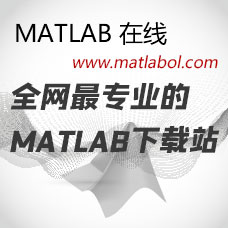Inside_NAND_Flash_Memories.pdf
Inside_NAND_Flash_Memories.pdfRino micheloni· Luca Crippa· Alessia marelliInside nand flashMemoriesSpringerRino micheloniLuca CrippaIntegrated Device TechnologyForward InsightsAgrate BrianzaNorth yorkItalCanadarino. micheloni@ieee. orgluca.crippa @ieee.orgAlessia marelliIntegrated Device Technologyagrate brianzaItalylessiamarelli@gmail.comISBN97890-481-9430-8e-ISBN97890-481-9431-5DOI10.1007/978-90-481-9431-5Springer Dordrecht Heidelberg London New YorkLibrary of Congress Control Number: 2010931597O Springer Science+Business Media B.V. 2010No part of this work may be reproduced, stored in a retrieval system, or transmitted in any form or byany means, electronic, mechanical, photocopying, microfilming, recording or otherwise, without writtenbeing entered and executed on a computer system, for exclusive use by the purchaser of the wor Ose ofpermission from the Publisher, with the exception of any material supplied specifically for the purpoCover design: eStudio Calamar SLPrinted on acid-free paperSpringerispartofSpringerScience+businessMedia(www.springer.com)PrefaceIn the last decade Flash cards became the most important digital storage supportIt is difficult to identify a single killer application(digital photography, MP3digital video, ...)or whether the success of this media support is due to itsusability in different applications. It is also difficult to state whether the recentlution in the infotainment area has been triggered by the availability of high-performance NAND Flash memories or if the extraordinary success of Flash cardsis a consequence of the establishment of new applicationsIn any case, independently of the cause-effect relationship linking new digitalapplications and Flash cards, to realize how NANd Flash memories entered in ourdaily life, it is sufficient to imagine as they would change our recent habits if theNAND memories disappeared suddenly. To take a picture it would be necessary tofind a film (as well as a traditional camera .), disks or even magnetic tapes wouldbe used to record a video or to listen a song, and a cellular phone would return tobe a simple mean of communication rather than a console for an extendedentertainmentThe development of nand Flash memories will not be set down on the mereevolution of these digital systems since a new killer application can trigger a furthersuccess for this memory support: the replacement of Hard Disk Drives(HDD)with Solid State Drives (SSD)The advantages of Ssd with respect to HDD are countless(higher read/writspeed, higher mechanical reliability, random access, silent operation, lower powerconsumption, lower weight, .. ) Nevertheless, the cost per gigabyte is stillsignificantly favorable to hDd and the success of ssd will depend only on theperformances that they will succeed in reachingThe present book, the fourth authored by rino micheloni and coworkers afterVLSI-Design of Non-volatiles Memories, Memories in Wireless Systems and ErrorCorrection Codes for Non-volatile Memories, all published by Springer, tacklesall the main aspects related to NANd Flash memories, from the physicaltechnological, and circuit issues to their use in Flash cards and SsdsAfter an extended market overview(Chap. 1), Chap 2 has been conceived as aguide for the entire book, so that the reader can directly reach the heart of theproblems that interest himThe following chapters deepen physical and technological aspects. In particularChaps. 3 and 4 tackle technological and reliability issues of traditional FloatingGate NAND memories, respectively, while the state-of-the-art of charge trappingtechnologies is effectively summarized in Chap 5Ⅴ i PrefaceThe central part of the book is dedicated to circuit issues: logic( Chap. 6),sensing circuits(Chaps. 8 and 9)and high voltage blocks( Chaps. 1l and 12)Other basic topics related to circuit aspects are also analyzed, such as theimplementation of Double Data Rate interfaces( Chap. 7), while multilevel storage(2 bits per cell) is presented in Chap. 10Techniques adopted to increase memory reliability and yield are discussedin Chaps. 13 and 14, the former dealing with redundancy, the latter with ErrorCorrection Codes. The test flux used by nand memories manufactures is describedin Chap 15Chapter 16 focus on nand devices storing 3 and 4 bits per cell that allowreaching the lower cost per gigabyte and that will conquer, in the next few years,the market of consumer applicationsThe last chapters are dedicated to the two most popular systems based onNAND memories: Flash cards( Chap. 17)and SsD(Chap. 18). The relationshipbetween Nand memories and system performances are highlightedFinally, Chap. 19 describes the effects of ionizing radiations on non-volatilememories, to understand whether NaNd memories can be safely used in spaceand military applicationsProf. Piero olivoDean of the Engineering FacultyUniversity of ferrara, ItalyAcknowledgementsAfter completing a project like a technical book, it is very hard to acknowledgeall the people who have contributed directly or indirectly with their work anddedicationFirst of all, we wish to thank all the authors of the contributed chaptersWe have to thank mark de Jongh for giving us the possibility of publishing thiswork and cindy zitter for her continuous supportLast but not least, we keep in mind all our present and past colleagues for theirsuggestions and fruitful discussionsRino. Luca and alessiaTable of contentsPrefaceAcknowledgementsvIII Market and applications for nand Flash memoriesGregory Wong2 NAND overview: from memory to systemsR. Micheloni, A Marelli and S. Commodaro3 Program and erase of Nand memory arrays55Cristoph Friederich4 Reliability issues of NAND Flash memoriesC. Zambelli. a. Chimenton and p. olivo5 Charge trap nand technologies115Alessandro grossi6 Control logic131A Marelli.R Micheloni andR. ravasio7 NAND DDR interface161Andrea silvagni8 Sensing circuits197L. Crippa and R. micheloni9 Parasitic effects and verify circuits235L. Crippa and R. michelonO MLC Storage261L Crippa and R Micheloni11 Charge pumps, voltage regulators and HV switchesR Micheloni and L Crippa
- 2020-12-08下载
- 积分:1
车联网白皮书(2018)
本白皮书从技术、产业和政策措施三个维度对车联网国内外发展现状及趋势进行分析。技术部分包括单车智能化相关汽车电子技术和 V2X 无线通信、多接入边缘计算、车路协同平台等网联化相关技术,以及信息安全等共性关键技术;产业部分从专利布局、产业链协同重点剖析产业发展新趋势,探索新生态和新模式等; 政策措施部分包括顶层设计规划、协同推进机制、法律法规等;最后总结全文,对车联网融合创新发展提出“1+3”举措建议,包括构建一个跨行业协调机制和技术创新、产业融合、安全管理三个发展体系。版权声明本白皮书版权属于中国信息通信研究院,并受法律保护。转载、摘编或利用其它方式使用本白皮书文字或者观点的,应注明“来源:中国信息通信研究院”。违反上述声明者,本院将追究其相关法律责任。前言车联网涉及汽车、电子、信息通信、交通等多个产业,正处于加速发展的关键阶段。我国应以加快推进车联冈新技术产业化和构建“人-车一路一云”协同的智慧交通体系为切入点,促进跨部门协同,加强法规标准建设、共性技术突破、基础设施改造等重点工作,打造产业新生态,实现新的产业集聚。本白皮书从技术、产业和政策措施三个维度对车联网国内外发展现状及趋势进行分析。技术部分包括单车智能化相关汽车电子技术和V2X无线通信、多接入边缘计算、车路协同平台等网联化相关技术,以及信息安全等共性关键技术;产业部分从专利布局、产业链协同重点剖析产业发展新趋势,探索新生态和新模式等;政策措施部分包括顶层设计规划、协同推进机制、法律法规等;最后总结全文,对车联网融合创新发展提出“1-3”举拮建议,包括构建一个跨行业协调机制和技术创新、产业融合、安全管理三个发展体系目录第一章车联网应用发展需求(一)以用户体验为核心的信息服务类应用(二)以车辆驾驶为核心的汽车智能类应用.(三)以协同为核心的智慧交通类应用第二章车联网技术发展研判(一)汽车电子成为新的战略竞争高地(二)V2X无线通信技术发展进入快车道(三)多接入边缘计算助力车联网全面发展(四)“端-管-云”协同的发展模式初现雏形...(五)车联网安全技术亟待完善第三章车联网产业发展趋势14(一)车联网产业融合发展新趋势........14(二)车联网商业模式发展现状及趋势20第四章政策措施及发展建议...........,...........23(一)美欧日等发达国家普遍重视车联网发展(二)我国支持车联网产业发展的政策措施基础............,,,,24(三)我国车联网产业创新融合发展建议..26图表目录图1车联网专利布局变化趋势.16图2专利企业数量变化趋势图16图3汽车智能化、自动驾驶专利申请企业活跃排名图4谷歌自动驾驶专利布局图5车联网的基本价值链.20图6智慧交通类应用商业模式屮国信息通信研究院车联网白皮书(2018年)第一章车联网应用发展需求当前,车联网技术发展和服务能力不断提升,借助于人、车、路云平台之间的全方位连接和信息交互,催生了大量新的产品应用。狭义的车联网应用通常指车载信息服务类应用,即通过车辆把车主与各种服务资源整合在一起;广义的车联网应用还包括面向交通的安全效率类应用以及以自动驾驶为基础的协同服务类应用。新应月也对汽车交通的智能化与网联化水平提出了新的发展需求,引领车联网技术与产业发展,促进城市数字化与智能化发展。车联网应用从不同的视角有不同的分类方式。根据联网技术不同,可以分为车内网、车际网和车云网应用;根据车联网应用对象不同,可以分为单用户应用以及行业应用两大类,行业应用又进一步分为企业应用和政府应用等;根据需求对象不同,可以分为自动驾驶、安全出行、效率出行、交通管理、商业营运、涉车服务等应用。无论哪种应用分类方式,都基本涉及到以用户体验为核心的信息服务类应用、以车辆驾驶为核心的汽车智能化类应用和以协同为核心的智慧交通类应用。(一)以用户体验为核心的信息服务类应用此类应用既包括提高驾乘体验、实现欢乐出行的基础性车载信息类应用,也包括与车辆上路驾驶、车辆出行前或岀行后的涉车服务后市场服务、车家服务等应用。该类应用需要车辆具备基本的联网通信能力和必要的车辆基础状态感知能力。基础性车载信息类应用仍是当前车联网主要应用形态,主要涉及车联网白皮书(2018年)屮国信息通信研究院车主的前台式互动体验,包含导航、娱乐、通信、远程诊断和救援、资讯等。目前很多车辆三加装车载模块,用户可以通过车载网联化获得信息服务,包括在线导航、娱乐等多媒体服务。随着语音识别、人眼动作识别等技术的逐步发展,车载信息类应用将更加丰富。涉车服务主要与定位、支付相结合,包括共享汽车、网约车、网租车等应用。汽车后市场服务主要有汽车保险、车辆维护延保、车辆美容、二手车交易等应用,随着汽车保有量增速的放缓,后市场服务应用价值将获得更多关注。车家服务主要通过基于位置、时间、日期等信息来智能化判定车主行为习惯,创建相应规则为车主提供智能家居系统服务应用,包括家用电器远程遥控等(二)以车辆驾驶为核心的汽车智能类应用此类应用主要与车辆行驶过程中的智能化相关,利用车上传感器,随时感知衎驶中的周围环境,收集数据、动静态辨识、侦测与追踪,并结合导航地图数据,进行系统运算与分析,主要有安全类和效率类等各种应用。安全类应用与车辆行驶安全及道路通行效率息息相关,有助于避免交通事故的发生。目前,依靠单车感知的安全驾驶辅助系统等传统应用处于快速成长期,在中低端车型渗透率将会逐步提升。同时,随着网联技术的不断成熟和推广,出现了更多安全预警类应用。例如,通过网联技术,行驶在高速公路等快速路段的前车,在感知到事故后可提早通知后面车辆事詼信息,避免连环追尾事故。效翠类应用主要是通过车车、车路信息交互,实现车辆和道路基屮国信息通信研究院车联网白皮书(2018年)础设施智能协同,有助于缓解交通拥堵、降低车辆排放等。典型应用有交叉路口智能信号灯、自适应巡航增强、智能停车管理等。例如,交叉路口智能信号灯应用通过网联技术来收集周边车辆速度、位置等信息,对信号灯参数进行动态优化,提高交叉路口车辆通行效率。(三)以协同为核心的智慧交通类应用此类应用是在自动驾驶的基础上,与多车管理调度及交通环境等智慧交通相关,最终支持实现城市大脑智能处置城市运行和治理协同。智慧交通主要是基于无线通信、传感探测等技术,实现车、路、环境之间的大协同,以缓解交通环境拥堵、提高道路环境安全、达到优系统资源为目的。在实现高等级自动驾驶之后,应用场景将由限定区域向公共交通体系拓展。在相对封闭的环境或危险地带场景中,因物理空间有限,行驶路况、线路、行驶条件等因素相对稳定,重复性高,通过独立云端平台协同度管理,采用固定路线、低速运行、重复性操作的应用更容易成熟落地。典犁应用有对园区、景区、机场、校园等限定区域内的自动驾驶巴士进行调度、港口专用集装箱智能运输等。在公共交通系统场景下,车辆的路径规划和行为预测能力对车辆的智能化和网联化水平提出了更高要求,需要更完善的自动驾驶控制策略、行驶过程全覆盖的5GV2X网联技术以及云平台的高效衔接调度。该类应用除依赖技术突破,还涉及到伦理、法规等,距实际成熟应用尚需时日,如自动驾驶出租车、自动驾驶公交车、智能配送等。车联网白皮书(2018年)屮国信息通信研究院第二章车联网技术发展研判车联网发展的热点聚焦网联化和智能化,并由单车智能逐步转向多车办同、以及“智慧的车”与“智慧的路”协同发展,这对车联网技术创新和产品研发提出了新的发展需求。汽车电子、2X无线通信、多接入边缘计算、云平台以及安全等为车联网网联化、智能化、协同化发展提供了坚实的技术基础。近年来,全球汽车产业快速增长,汽车电子成为产业增长的重要引擎,通过人机交互、汽车功能提升等方式提升驾驶体验。此外,自动驾驶等协同应用成为汽车巳子发展的重要方向。V2X无线通信技术旨在将“人-车-路-云”等交通参与要素有机地联系在一起,不仅可以为交通安全和效率类应用提供通信基础,还可以将车辆与其他车辆、行人、路侧设施等交通元素有机结合,弥补了单车智能的不足,推动了协巨式应用服务发展。多接入边缘计算可以有效解决未来网络高带宽、低时延、高可靠需求以及大规模终端连接等要,支持多种终端接入方式,有效提升道路的智能化水平云平台能够为未来的协同交通体系提供统一的数据采集、智能决策及控制执行等基础支撑,继而将整个车联网要素连接成一个整体。车联网安全形势紧迫,需要在车载终端安全、数据交互安全、平台信息安全和隐私保护等方面开展关键技术攻关及产品研制,形成贯穿于车联风“端-管-云”全链条的综合安全体系。(一)汽车电子成为新的战略竞争高地全球汽车产业增速放缓,汽车电子成为产业增长的重要引擎。据
- 2020-12-09下载
- 积分:1


